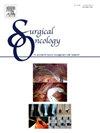Quantity of lower muscle as a promising prognostic factor for overall survival in patients with bone and soft tissue sarcoma
IF 2.4
4区 医学
Q3 ONCOLOGY
引用次数: 0
Abstract
Introduction
Various prognostic factors of bone sarcoma (BS) and soft tissue sarcoma (STS) have been investigated in the past. Recent reports indicate that muscle quantity is related to prognosis of older cancer patients. However, to the best of our knowledge, there are no reports on the relationship between femoral muscle volume and overall survival (OS), local recurrence-free survival (LRFS), or metastasis-free survival (MFS) in patients with BS and STS aged ≥18 years.
Methods
Clinicopathological data of 119 patients with BS and STS treated between 2014 and 2023 at a single institution were retrospectively analyzed. Based on positron emission tomography–computed tomography information, the quantity of femoral muscles, psoas muscle index at the L3 level, and triceps surae muscle were investigated in four age groups (19–39, 40–59, 60–74, >75 years). Sex, age, tumor size, location, grade, American Joint Committee on Cancer stage, history of chemotherapy, history of radiation therapy, American Society of Anesthesiologists–Physical Status, and muscle volumes were evaluated using Cox proportional hazards regression models. Five-year survival rates were assessed using the Kaplan–Meier method.
Results
Median follow-up was 34 months (interquartile range, 17–64). Five-year OS, LRFS, and MFS rates were 73.7 %, 86.6 %, and 76.7 %, respectively. In multivariate analysis, tumor stage IV and decreased all-femoral muscle volume were significantly associated with poor OS.
Conclusions
Decreased femoral muscle volume is a significant factor associated with poor OS. Therefore, it may be important for adult patients to maintain postoperative all-femoral muscle volume as much as possible.
骨和软组织肉瘤患者的下肌数量是一个有希望的预后因素
骨肉瘤(BS)和软组织肉瘤(STS)的各种预后因素已被研究。最近的报道表明,肌肉量与老年癌症患者的预后有关。然而,据我们所知,在年龄≥18岁的BS和STS患者中,没有关于股肌体积与总生存期(OS)、局部无复发生存期(LRFS)或无转移生存期(MFS)之间关系的报道。方法回顾性分析2014 - 2023年在同一医院治疗的119例BS和STS患者的临床病理资料。基于正电子发射断层扫描和计算机断层扫描信息,研究了4个年龄组(19-39岁、40-59岁、60-74岁和75岁)的股骨肌数量、腰大肌指数和肱三头肌表面肌。使用Cox比例风险回归模型评估患者的性别、年龄、肿瘤大小、位置、分级、美国癌症分期联合委员会、化疗史、放疗史、美国麻醉医师协会-身体状况和肌肉体积。采用Kaplan-Meier法评估5年生存率。结果中位随访时间为34个月(四分位数间距17-64)。5年OS、LRFS和MFS率分别为73.7%、86.6%和76.7%。在多变量分析中,肿瘤分期和全股肌体积减小与不良OS显著相关。结论股肌体积减小是导致OS不良的重要因素。因此,成年患者术后尽可能保持全股肌容量是很重要的。
本文章由计算机程序翻译,如有差异,请以英文原文为准。
求助全文
约1分钟内获得全文
求助全文
来源期刊

Surgical Oncology-Oxford
医学-外科
CiteScore
4.50
自引率
0.00%
发文量
169
审稿时长
38 days
期刊介绍:
Surgical Oncology is a peer reviewed journal publishing review articles that contribute to the advancement of knowledge in surgical oncology and related fields of interest. Articles represent a spectrum of current technology in oncology research as well as those concerning clinical trials, surgical technique, methods of investigation and patient evaluation. Surgical Oncology publishes comprehensive Reviews that examine individual topics in considerable detail, in addition to editorials and commentaries which focus on selected papers. The journal also publishes special issues which explore topics of interest to surgical oncologists in great detail - outlining recent advancements and providing readers with the most up to date information.
 求助内容:
求助内容: 应助结果提醒方式:
应助结果提醒方式:


